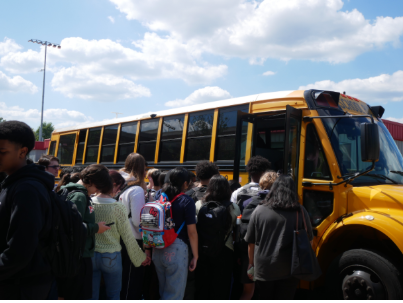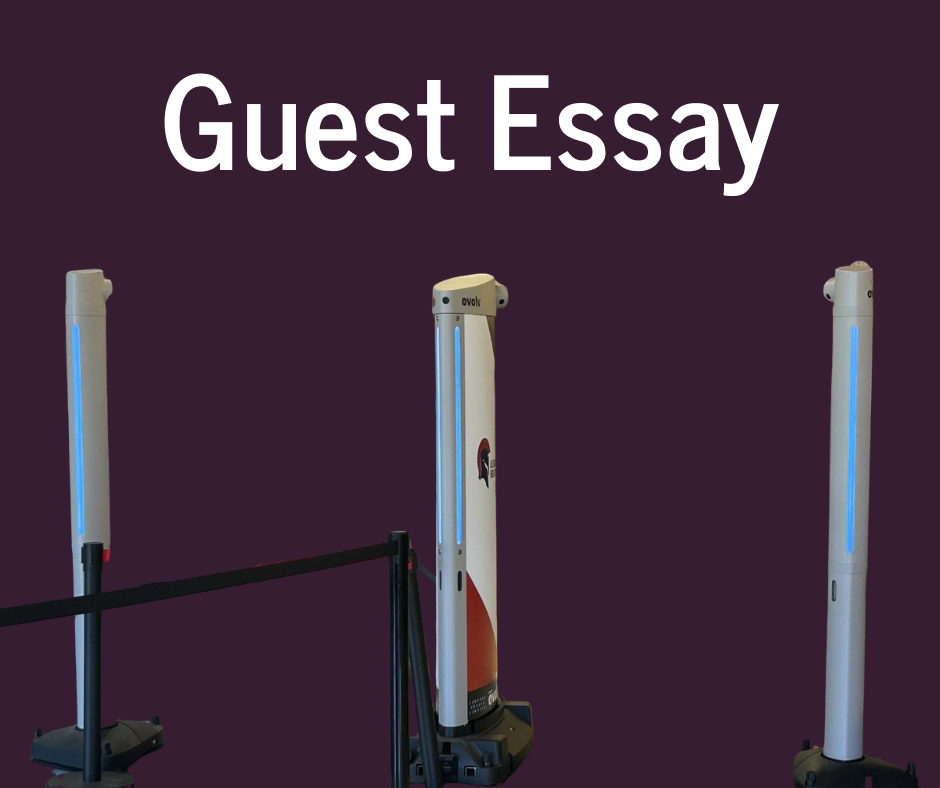At Alexandria City High School, only students know what happens for the full duration of inter-campus transition. This leaves the rest of the community in the dark surrounding the intricacies of simply moving from class to class. Most people don’t understand that it is not easy.
Tiana Tobias, a student at ACHS, said, “They make you wait outside for a long time and then I’m still late anyway.”
“I’m always a couple minutes late,” said another student, Madeline Martsching.
These students represent a growing majority of the student body who believe the bus system simply is not going to work with the restrictions placed upon it. The current procedures are inconvenient. Students exit their class five minutes before dismissal, forfeiting time that could be spent getting help from teachers, and make their way to the bus loop. As the buses slowly pull up, large crowds form around their closed doors. However, before a bus can let students on board, the one in front of it has to be full.
This creates an irritating situation where students are forced to wait next to a bus with closed doors. At the same time, they are yelled at to go to the bus in front of it, which usually has only a couple of open seats. Of course, students do not want to take the risk of leaving the crowd because oftentimes they do not make it onto the bus in front. Therefore, they are stuck waiting for another bus to slowly pull into the bus loop. The students pile onto the crowded bus, and the last ones are forced off because of a lack of room. How efficient.
Once students make it to the other campus, they proceed through security. The students are almost to their next class, praying that the metal detector lights don’t turn red, when the security guards yell, “SECONDARY.” If students hear that, then there is no chance of making it to class on time.
However, inter-campus transportation quality is not the only thing lacking. One morning, a bus arrived at Minnie Howard with a full load of students at 9:07 a.m., an anomaly that points to a larger issue of late arrivals to school. They were already over 30 minutes late to class, not including the time it would take to get through security and reach their classrooms.
As of right now, students have only had to wait in the rain a couple of times this year. However, as the weather is changing, who knows what students will be exposed to. Imagine students waiting for a bus to open its doors while they are being hailed on. This could be a very real experience in a couple of months.
These delays are not necessarily because of administrator mismanagement. Currently, there is a nationwide bus driver shortage, so Alexandria City Public Schools is not alone. ACPS employs a limited number of full time bus drivers, meaning that across all 18 schools and 16,300 students, there are few available for the job.
The Academic Principal of the Business and Government Academy, Greg Thomas, directs buses and students at the King Street Campus. Thomas feels that the transportation system requires more than numbers and data, and that it is important for the students to feel respected and valued, rather than just arriving on time. He also thinks the system is doing pretty well, but also understands that there are problems with transportation.
A popular suggestion among community members is to give students more time to transition between campuses. However, the most obvious fixes are oftentimes misleading. Thomas said, “If we stretch the time, people will fill the time.”
For students, this isn’t just a little bit of time spent sitting on a bus. The academic ramifications of missing class, even for a few minutes, are serious. Because students are dismissed five minutes early, teachers must end their class early to accommodate. Students also arrive slightly late, missing a couple minutes of their next period, so teachers cannot start on time either. Buses often arrive at school late as well, forcing teachers to delay starting their first and second periods. Therefore, over 45 minutes of instructional time is lost each day. That’s 15 hours lost each month, 20 days each year, and 80 throughout the high school experience.
There are a couple paths ACPS can take moving forward. The most obvious solution is to increase the time allotted for passing periods. If this was instituted, students would not miss any of their class time while still having ample time to be transported between campuses. There are two ways this could be implemented. The first way is adding extra time to the school day, or extra school days to the year. However, it is likely that students would be heavily opposed to this because it would impede on their free time. The other way that expanding passing periods would work is just absorbing the time. The downside is that teachers would still have less time to teach.
Another possibility is less students transitioning, but it’s not exactly feasible. This would create a logistical nightmare for our beloved counselors. Under this system, students would be barred from taking particular classes because they are not at their primary campus. This would surely cause student outrage.
Maybe the issue is the transportation itself. If students were allowed to walk between campuses they would be happy, but administrators would not. The school would be liable for any incidents that occur while students are walking from campus to campus. Students getting into a crash would be the school’s fault. A fight at McDonald’s would also be the school’s fault. Clearly, the school board cannot implement this because of liability issues.
“OK,” you may say, “obviously, transportation won’t work. What about splitting the school into two campuses?” This has already been discussed as an idea. The elephant in the room, however, is systemic racism. T.C. Williams and Minnie Howard originally combined in an effort to desegregate the schools. Therefore, if the schools are split again, it could be seen as a de-facto return to segregation.
Personally, my favorite potential solution is an underground tunnel between the campuses. It would be a massive undertaking that would take place over many years and would most likely cost billions of dollars, but it would entirely fix the issue. It would be similar to the underground tunnels at the capital building. Imagine a world where students never leave campus, so there is no need for security screening. Students stream through a tunnel that is faster than a bus and is efficient enough to transport all students at the same time.
Finding a solution is hard, but the community can help carry the burden. Parents, teachers, students and other community members go to a school board meeting. Pitch an idea, even if it doesn’t seem perfect. Teamwork and thoughtful ideas will fix this problem, not discord and spite.










